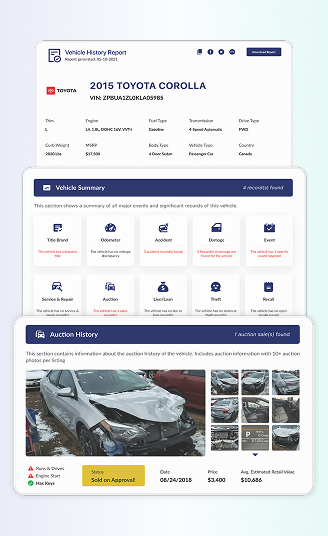Driving can be a thrilling experience, but it’s important to be prepared for unexpected situations on the road. One such situation is when your vehicle begins to skid. It can be a scary and potentially dangerous moment, but with the right knowledge and techniques, you can regain control and navigate through it safely. If your vehicle begins to skid, what should be done? In this comprehensive guide, we will explore various strategies and tips on how to recover control of your vehicle if it starts to skid. So, let’s dive in!
Different types of skids you may encounter
A skid occurs when one or more of your tires lose traction with the road surface, resulting in a loss of control. Skidding is a common occurrence in winter driving conditions, but it can also happen on wet or icy roads. So, if you find yourself in this situation and your vehicle begins to skid, it’s important to stay calm and take action to regain control.
Before we discuss what you should do if your vehicle begins to skid, here are a few common types of skids:
- Oversteer skid: This type of skid happens when the rear wheels lose traction, causing the rear of the vehicle to slide out.
- Understeer skid: Understeer occurs when the front tires lose traction, making it difficult to steer the vehicle.
- Braking skid: This skid typically occurs when you brake hard and lock up the wheels, causing the vehicle to slide in a straight line.
Now, let’s discuss further and identify recovery methods.
How to recover control if your vehicle begins to skid
If your vehicle begins to skid, you must remember that staying calm and taking immediate action are crucial. Every step you take has to be properly calculated and specific.
What should you do in an oversteer skid?
Again, an oversteer skid occurs when the rear wheels lose traction, causing the rear of the vehicle to slide out. This type of skid is often experienced in high-powered rear-wheel-drive vehicles, but it can happen in any vehicle under certain conditions. Here’s how you can recover from an oversteer skid:
- Ease off the accelerator: As soon as you feel the rear of your vehicle sliding out, gently release the accelerator pedal. This reduces the power being sent to the rear wheels and helps regain traction.
- Look and steer in the intended direction: Turn the steering wheel gently in the direction you want the vehicle to go. Keep your focus on the desired path rather than fixating on the skid itself. This technique is known as “steering into the skid.” By doing so, you allow the front wheels to regain traction and align the vehicle with the intended direction.
- Gradually apply the brakes: Once you have regained control and the vehicle starts to straighten out, you can gradually apply the brakes. Apply firm, steady pressure to slow down and regain full control of the vehicle. Avoid sudden or harsh braking, as it can worsen the skid or cause the wheels to lock up.
Remember, smooth and controlled inputs are key when recovering from an oversteer skid. Practice this technique in a safe environment, such as a skid control training facility, to improve your skills and response time.
What should you do in an understeer skid?
This type of skid is commonly encountered when entering a turn at too high a speed or when road conditions reduce traction. Here’s what to do if you find yourself in an understeer skid:
- Ease off the accelerator: Take your foot off the accelerator to transfer weight to the front wheels, increasing traction. This helps the tires regain grip on the road.
- Avoid sudden steering inputs: Rather than making abrupt or aggressive steering maneuvers, make small and controlled adjustments to steer the vehicle back on track. Smoothly and gradually turn the steering wheel in the intended direction of the turn. Be patient and allow the front tires to regain traction and guide the vehicle.
- Gradually apply the brakes: Once the vehicle regains traction and you have successfully maneuvered out of the skid, you can gradually apply the brakes to slow down if necessary. Apply the brakes smoothly and steadily, avoiding sudden or harsh braking, which can lead to locking up the wheels.
Developing a sense of awareness of the road conditions, adjusting your speed before entering a turn, and practicing smooth steering inputs will help prevent understeer skids. It’s also beneficial to regularly check your tire pressure and tread depth to ensure optimal grip.
What about a braking skid?
Car skidding when braking occurs when you apply the brakes hard and lock up the wheels. This skid can happen in various situations, such as emergency stops or when braking on slippery surfaces. Here’s how to recover from a braking skid:
- Release the brakes: If you feel the wheels lock up and the vehicle starts to slide in a straight line, release the brakes momentarily. This action allows the wheels to regain traction.
- Pump the brakes (non-ABS): For vehicles without an anti-lock braking system (ABS), gently apply and release the brakes in a pumping motion. This technique helps prevent the wheels from locking up and allows you to maintain some steering control while slowing down. Repeat the pumping action until you regain control.
- Apply threshold braking (ABS-equipped): If your vehicle is equipped with ABS, maintain firm and continuous pressure on the brake pedal. The ABS system automatically modulates the brake force to prevent wheel lockup and maintain steering control. Keep your foot on the brake pedal and let the ABS do its job until you regain control of the vehicle.
It’s important to note that ABS-equipped vehicles require a different approach to braking compared to non-ABS vehicles. Understanding the capabilities of your vehicle’s braking system and practicing controlled braking techniques can significantly help in recovering from braking skids.
So, these are the tips to recover control of your vehicle if it begins to skid.
How to avoid getting into a skidding situation
To avoid skids altogether, it’s important to adopt good driving habits and maintain control of your vehicle. Here are some key tips:
- Keep a safe following distance: Maintain a safe following distance from the vehicle in front of you, allowing ample time to react to sudden changes in traffic or road conditions.
- Slow down in inclement weather: Reduce your speed when driving on wet, icy, or snowy roads, as these surfaces significantly decrease traction.
- Ensure proper tire maintenance: Regularly check your tire pressure, tread depth, and overall condition to ensure optimal grip on the road.
- Smooth acceleration and deceleration: Gradual acceleration and braking help maintain control of your vehicle, minimizing the chances of skidding.
Skidding can be a dangerous situation, but it’s important to remember that it can be avoided. By following the tips in this article, you can help keep yourself and others safe on the road. Also, note that if you are purchasing a used car, you can verify the vehicle’s overall condition with our VIN check tool. Check and discover if the vehicle you are interested in has been in an accident, possibly due to skidding, and verify the extent of damages sustained.
Run a VIN Check today!
More From
Adewale Peter

When Are Used Car Prices Going Down In 2025?
If you are planning on buying a used car this year 2025, then you must have wondered when used car prices would be going down. Everybody wants to get the

When Will New Car Prices Drop? | Find it out in 2025
Are you patiently waiting and hoping for car prices to drop before you can get your favorite ride? You may find this news exciting! As reported by Kelley Blue Book,

6 Things To Look Out For When Buying a Used Vehicle
4 min read By Richard Langringe Whatsapp Facebook Twitter Youtube Instagram Pinterest Buying a used vehicle may be the correct decision for you particularly considering the devaluation of a new

Pros and Cons Of Buying a Hybrid Car In 2025
Hybrid cars are one of the revolutionary innovations that are shaping the world as we know it. They are not completely conventional cars, but they also aren’t electric cars either.
Popular Articles

When Are Used Car Prices Going Down In 2025?
If you are planning on buying a used car this year 2025, then you must have wondered when used car prices would be going down. Everybody wants to get the

When Will New Car Prices Drop? | Find it out in 2025
Are you patiently waiting and hoping for car prices to drop before you can get your favorite ride? You may find this news exciting! As reported by Kelley Blue Book,

6 Things To Look Out For When Buying a Used Vehicle
4 min read By Richard Langringe Whatsapp Facebook Twitter Youtube Instagram Pinterest Buying a used vehicle may be the correct decision for you particularly considering the devaluation of a new

Pros and Cons Of Buying a Hybrid Car In 2025
Hybrid cars are one of the revolutionary innovations that are shaping the world as we know it. They are not completely conventional cars, but they also aren’t electric cars either.



